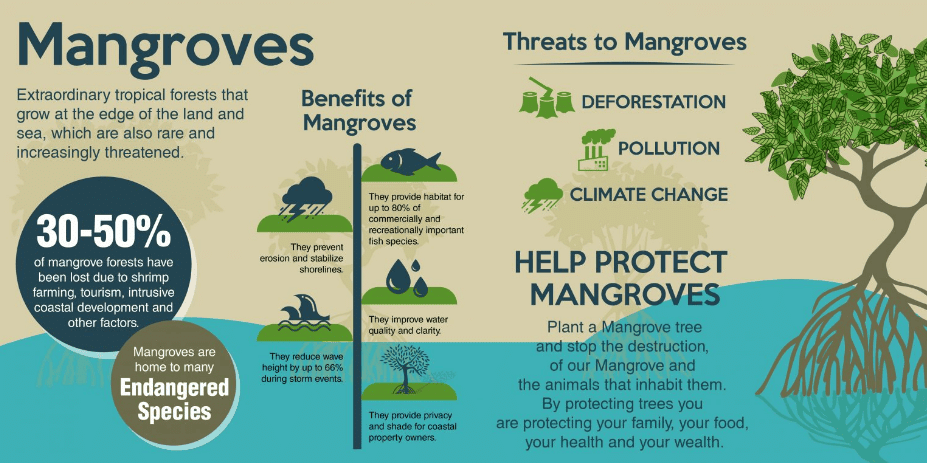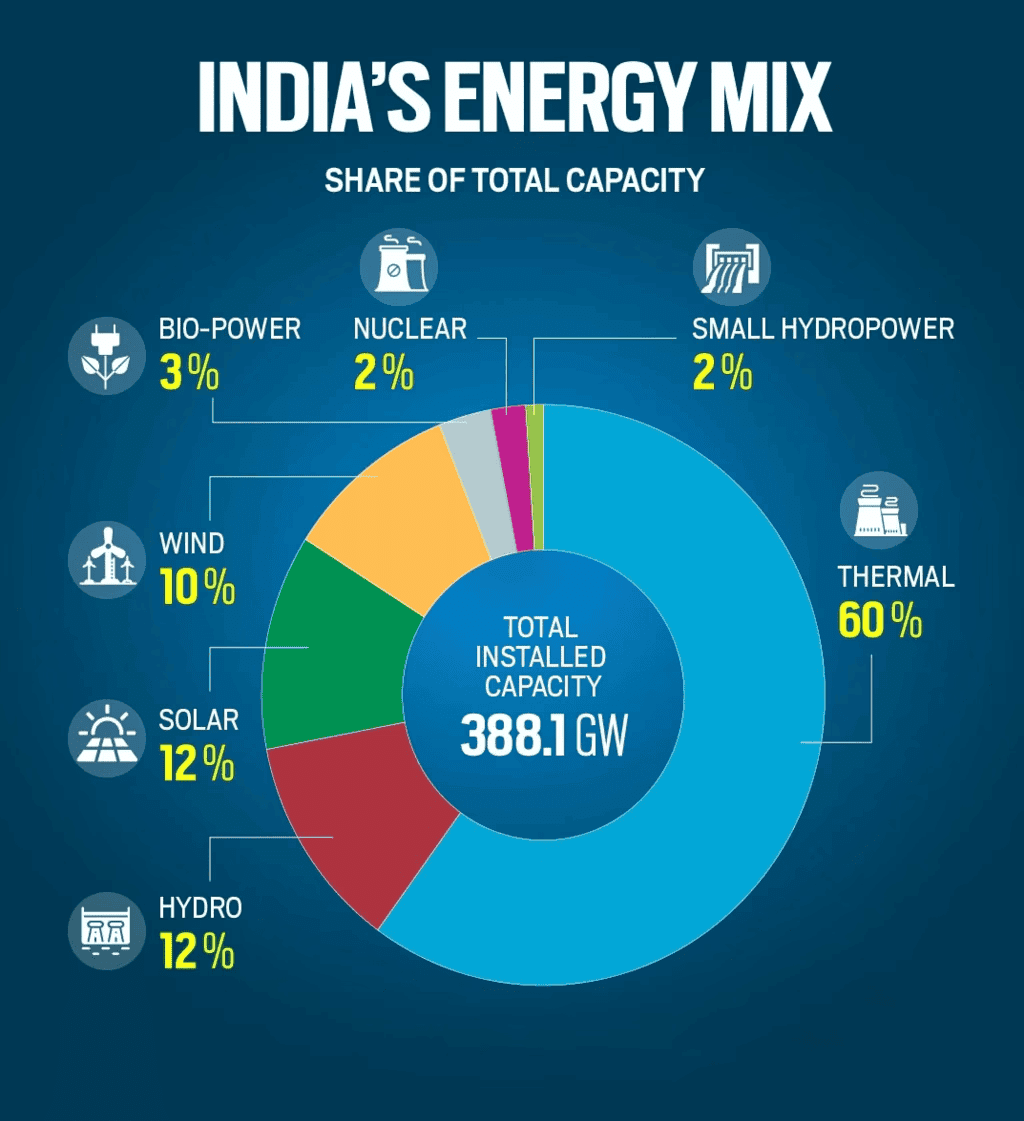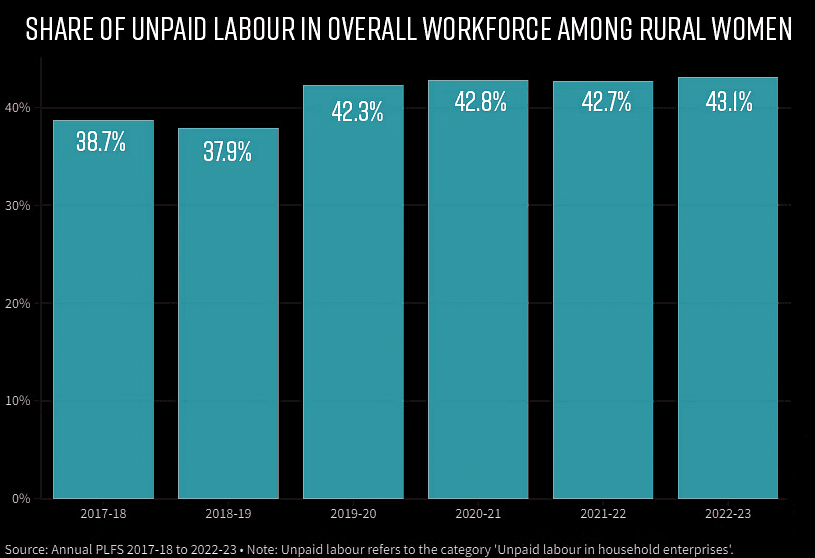Weekly Current Affairs (1st to 7th November 2024) Part - 1 | General Test Preparation for CUET UG - CUET Commerce PDF Download
GS3/Environment
Mangroves in Coastal Resilience

Why in news?
- Recently, Cyclone Dana made landfall near Bhitarkanika National Park and Dhamra Port in Odisha, highlighting the critical role that mangrove forests play in mitigating cyclone impacts. The damage caused by the cyclone was less severe than expected, thanks to the extensive mangrove forest cover in Bhitarkanika. This area has historically withstood the effects of several cyclones, including the devastating Super Cyclone of October 1999.
What are Mangroves?
- About: Mangroves are unique salt-tolerant trees and shrubs that flourish in estuarine and intertidal zones where freshwater meets saltwater. Their adaptations, such as aerial roots and waxy leaves, enable them to thrive in saline conditions. They form a littoral forest ecosystem, growing in brackish waters along coastlines.
- Common Mangrove Species: Examples include Red Mangrove, Grey Mangrove, and Rhizophora.
Mangrove Cover in India:
- Current Status: As per the Indian State Forest Report 2021, India's mangrove cover stands at 4,992 sq. km, which constitutes about 0.15% of the total geographical area.
- Geographical Distribution: Significant mangrove ecosystems are found in states like Odisha (Bhitarkanika), Andhra Pradesh (Godavari-Krishna delta), Gujarat, Kerala, and the Andaman Islands. The Sundarbans, spanning India and Bangladesh, is recognized as the largest contiguous mangrove forest globally, while Bhitarkanika ranks second in India.
Role of Mangroves in Cyclone Mitigation:
- Coastal Defence: Mangroves serve as the primary barrier for coastal communities, stabilizing shorelines and preventing erosion.
- Storm Surge Protection: They act as natural buffers against storm surges caused by cyclones, significantly lowering surge heights and water flow velocities, which reduces flooding and coastal damage.
- Integration with Infrastructure: The effectiveness of mangroves can be increased when they are combined with man-made structures, such as embankments.
Initiatives for Protection and Conservation of Mangroves:
- MISHTI Initiative: Announced in the Union Budget 2023-24, this initiative focuses on mangrove plantation along coastlines and salt pan areas.
- Mangrove Alliance for Climate: This alliance includes countries like UAE, Indonesia, India, Sri Lanka, Australia, Japan, and Spain, aiming to raise global awareness on the importance of mangroves in combating climate change.
- Blue Carbon Initiative: Coordinated by Conservation International, IUCN, and IOC-UNESCO, this initiative promotes the conservation and restoration of coastal ecosystems to mitigate climate change.
What are the Challenges with Mangrove Conservation?
- Commercialisation of Coastal Areas: Activities like aquaculture, coastal development, and industrialization are rapidly replacing mangrove habitats.
- Temperature Related Issues: Sudden temperature fluctuations can stress mangrove species, while freezing temperatures can be lethal to some.
- Soil Related Issues: Mangroves grow in oxygen-poor soils, presenting challenges for their survival.
- Pollution and Contamination: Agricultural runoff, industrial waste, and improper disposal contaminate mangrove ecosystems.
- Lack of Integrated Management: Often, mangrove management occurs separately, neglecting their connections with other ecosystems like coral reefs and seagrass beds.
What can be Done to Preserve Mangroves?
- Utilize bio-restoration techniques, such as Assisted Natural Regeneration (ANR), to rehabilitate degraded mangrove areas and support biodiversity.
- Implement policies focused on conserving existing mangrove forests and restoring degraded areas, promoting sustainable management practices to bolster coastal ecosystems’ resilience.
- Engage local communities in conservation efforts to foster ownership and ensure the sustainability of mangrove ecosystems. Educational programs can enhance awareness of the benefits of mangroves.
Conclusion
- Enhancing mangrove conservation efforts is crucial for improving India's resilience to cyclones and protecting coastal communities. The integration of ecological and infrastructural strategies will be essential for achieving long-term sustainability and reducing disaster risks.
Mains Question:
- Examine the role of mangrove ecosystems in mitigating the impacts of cyclones. Discuss the significance of mangrove preservation in India’s coastal disaster management strategy.
GS3/Science and Technology
Biotechnology Experiments for India's Upcoming Space Station
Why in news?
- Recently, the Indian Space Research Organisation (ISRO) and the Department of Biotechnology (DBT) have entered into a collaboration to design and conduct experiments that will be incorporated into the Bharatiya Antariksh Station (BAS), which is expected to be developed between 2028 and 2035.
Why have ISRO and DBT Collaborated for Space Experiments?
- The primary challenges faced during space missions include ensuring a steady supply of nutrients, food preservation, the effects of microgravity and radiation, and health issues such as cancer, cataracts, as well as bone and muscle degeneration.
- This Memorandum of Understanding (MoU) aims to tackle these challenges through the application of biotechnology.
Potential Experiments:
- Studying how weightlessness contributes to muscle loss in astronauts.
- Identifying specific algae species that could provide essential nutrients or enhance food preservation methods.
- Investigating the potential of certain algae for producing jet fuel.
- Evaluating the effects of radiation exposure on the health of individuals aboard space stations.
What is Bharatiya Antariksh Station (BAS)?
- The Bharatiya Antariksh Station is India's planned indigenous space station designed for scientific research purposes.
- It will be developed in three phases and will consist of five modules.
- The first module, called BAS-1, is projected to be launched in 2028, with the station anticipated to be fully operational by 2035.
Key Details about the BAS:
- Orbit: The BAS will orbit the Earth at an altitude of approximately 400 to 450 kilometers.
- Weight: The space station will have an estimated weight of around 52 tonnes.
- Crew: Astronauts will have the capacity to remain in orbit for durations of 15 to 20 days.
- Modules: The BAS will include a crew command module, a habitat module, a propulsion module, and docking ports.
- Purpose: The station will be utilized for scientific research encompassing microgravity experiments, Earth observation, and the promotion of innovation.
- Collaboration: The BAS aims to foster international collaborations with various countries and space agencies.
- Program: The program will be led by ISRO, involving partnerships with industry, academic institutions, and other national entities.
GS3/Environment
Tiger Translocation for Genetic Diversity

Why in news?
- Recently, the Odisha government undertook the translocation of a tigress named Jamuna from the Tadoba Andhari Tiger Reserve in Maharashtra to the Similipal Tiger Reserve (STR) in Odisha. This initiative aims to improve the genetic diversity of the tiger population in Similipal, which faces inbreeding issues due to a limited number of individuals.
Key Facts About this Translocation
Previous Translocation Attempts:
- In 2018, a tigress named Sundari was relocated to the Satkosia Tiger Reserve.
- The National Tiger Conservation Authority (NTCA) is responsible for approving translocation projects.
Translocation of Black Tigers:
- The Odisha Tiger Estimation conducted in 2024 identified a total of 24 adult tigers in Similipal, including a significant number of pseudo-melanistic tigers.
- STR is uniquely recognized as the only habitat where these black tigers exist in the wild.
Inbreeding Concerns:
- The presence of 13 out of 24 adult tigers being pseudo-melanistic raises alarms about inbreeding and the necessity for external genetic contributions.
Future Initiatives:
- Plans are underway to create a melanistic tiger safari in Similipal, which would mark the first of its kind globally.
Key Facts About Similipal Tiger Reserve
Location:
- The Similipal Tiger Reserve and National Park is located in Mayurbhanj district, Odisha.
- It was designated as part of Project Tiger in 1973 and included in UNESCO's Biosphere Reserve list in 2009.
Geography:
- Similipal National Park features prominent natural landmarks such as Joranda and Barehipani waterfalls, Khairiburu and Meghashini peaks.
- Several rivers, including Burhabalanga, Palpala Bandan, Salandi, Kahairi, and Deo, flow through the reserve.
- The reserve is named after the Simul (Silk Cotton) tree.
Biodiversity:
- The predominant forest type is tropical moist deciduous forests.
- Mammals found in the area include leopards, sambar deer, barking deer, gaurs, jungle cats, wild boars, four-horned antelopes, giant squirrels, and common langurs.
- Avian species include grey hornbills, Indian pied hornbills, and Malabar pied hornbills.
- Reptiles such as mugger crocodiles inhabit the Khairi and Deo Rivers.
Indigenous Population:
- The reserve is home to indigenous tribes such as Kolha, Santhala, Bhumija, Bhatudi, Gondas, Khadia, Mankadia, and Sahara.
- These tribes have cultural practices that include the worship of sacred groves known as Jharia.
Key Facts About Tadoba Andhari Tiger Reserve
Overview:
- Tadoba Andhari Tiger Reserve is located in Maharashtra and is recognized as the oldest and largest national park in the state.
- The name Tadoba is derived from a local deity revered by the tribal people in the area.
- The reserve is named after the Andhari River, which flows through it.
Flora and Fauna:
- Flora includes teak, semal, tendu, beheda, karaya gum, mahua madhuca, arjun, bamboo, and more.
- Fauna consists of tigers, Indian leopards, sloth bears, gaurs, nilgai, dhole, small Indian civets, sambars, spotted deer, barking deer, and chital.
GS3/Environment
COP-16 of Convention of Biological Diversity

Why in news?
- Recently, the 16th edition of the Conference of Parties (COP 16) to the Convention of Biological Diversity (CBD) concluded in Cali, Colombia. During this event, India unveiled the updated National Biodiversity Strategy and Action Plan (NBSAP), which aligns with the Kunming-Montreal Global Biodiversity Framework (KMGBF).
Key Highlights of COP-16 to the CBD
- The Cali Fund was established to guarantee fair and equitable sharing of benefits derived from digital sequence information (DSI) on genetic resources. At least 50% of this fund will prioritize the self-identified needs of Indigenous Peoples and local communities, especially focusing on women and youth.
- DSI includes genomic sequence data vital for environmental and biological research.
- A new permanent subsidiary body was agreed upon to address Article 8j, which pertains to the preservation, maintenance, and sharing of Indigenous peoples' knowledge, innovations, and practices.
- A new Programme of Work on Indigenous Peoples and Local Communities was adopted, outlining specific tasks for their meaningful involvement in biodiversity conservation and sustainable use.
- Resource Mobilisation:A new "Strategy for Resource Mobilization" was developed to secure USD 200 billion annually by 2030 for biodiversity initiatives globally.
- The Kunming Biodiversity Fund (KBF) was launched with an initial contribution of USD 200 million from China, aiming to redirect USD 500 billion annually in harmful subsidies by 2030.
- National Biodiversity Targets:119 out of 196 CBD Parties submitted national biodiversity targets to achieve the 23 KMGBF targets, with 44 countries having submitted their National Biodiversity Strategy and Action Plans.
- Synthetic Biology: COP-16 introduced a thematic action plan aimed at addressing inequities through capacity-building, technology transfer, and knowledge sharing among developing nations. This field involves engineering principles to create or modify organisms via methods like DNA sequencing and genome editing.
- Invasive Alien Species: Guidelines were proposed for managing invasive alien species through new databases, enhanced cross-border trade regulations, and better coordination with e-commerce platforms.
- Ecologically or Biologically Significant Marine Areas (EBSAs): A new process was agreed upon to identify critical and vulnerable ocean areas, which are essential for conservation efforts.
- Sustainable Wildlife Management and Plant Conservation: Decisions emphasized the importance of monitoring, capacity-building, and active participation of Indigenous Peoples, local communities, and women in sustainable wildlife management. Progress in plant protection must align with global biodiversity targets.
- Global Action Plan on Biodiversity and Health: A plan designed to address zoonotic diseases, prevent non-communicable diseases, and promote sustainable ecosystems was approved. It adopts a comprehensive "One Health" approach that interlinks the health of ecosystems, animals, and humans.
- Risk Assessment: New voluntary guidance on assessing risks posed by living modified organisms (LMOs) containing engineered genes was welcomed under the Cartagena Protocol on Biosafety.
- Recognition of People of African Descent: A decision was made to acknowledge the contributions of people of African descent in implementing the Convention.
Key Points of India's Updated NBSAP
- The updated NBSAP aligns with the KMGBF’s global objectives, focusing on reducing threats to biodiversity, promoting sustainable usage, enhancing ecosystem resilience, and facilitating species recovery.
- Comprehensive Structure: It comprises seven chapters covering contextual analysis, capacity-building, financing mechanisms, and biodiversity monitoring frameworks.
- Implementation: The Ministry of Environment, Forest, and Climate Change (MoEFCC) will oversee biodiversity conservation, supported by a multi-tier governance structure involving the National Biodiversity Authority (NBA), State Biodiversity Boards (SBBs), Union Territory Biodiversity Councils (UTBCs), and Biodiversity Management Committees (BMCs).
Targets:
- Aim to effectively conserve 30% of specified areas to enhance biodiversity.
- Target a 50% reduction in the introduction and establishment of invasive species.
- Promote sustainable consumption choices and halve food waste.
- Commit to reducing pollution, specifically aiming to cut nutrient loss and pesticide risk by half.
- Encourage benefit sharing from genetic resources, DSI, and associated traditional knowledge.
- Plan to allocate approximately Rs 81,664 crore for biodiversity and conservation from 2025 to 2030, with a noted need for international financing to achieve these goals.
- Engage local communities, particularly those dependent on forests, in conservation efforts.
Conclusion
- The 16th Conference of Parties (COP 16) to the Convention on Biological Diversity marked significant advancements in global biodiversity efforts, particularly through the establishment of the Cali Fund, the updated National Biodiversity Strategy and Action Plans, and a commitment to equitable resource sharing and sustainable practices.
Mains Question:
- Evaluate the key features of India’s updated National Biodiversity Strategy and Action Plan (NBSAP) and its alignment with the Kunming-Montreal Global Biodiversity Framework (KMGBF).
GS3/Economy
RBI’s Repatriation of Gold

Why in News?
- Recently, the Reserve Bank of India (RBI) has repatriated 102 tonnes of gold from the Bank of England (BoE) and the Bank for International Settlements (BIS). According to the RBI’s “Half Yearly Report on Management of Foreign Exchange Reserves”, gold held domestically stands at 510.46 metric tonnes in September 2024. India’s total gold reserves held by the RBI amount to 854.73 metric tonnes.
Why is India Repatriating Gold?
- Reducing Geopolitical Risks: Countries prefer to hold their gold reserves domestically to protect them from potential foreign sanctions or restrictions that could freeze or limit access to assets stored abroad. For instance, due to sanctions imposed by the US and its allies during the Ukraine war, Russia's access to USD 300 billion in gold and foreign exchange reserves has been frozen.
- Increasing Market Confidence: Gold is regarded as a "safe haven" asset, especially in emerging markets. Having it within national borders can enhance public confidence in the financial system.
- Economic Sovereignty: India’s gold reserves now exceed 101% of the country’s external debt, which boosts India’s ability to repay its debts.
- Supporting Domestic Financial Markets: With gold physically present in India, the RBI gains more flexibility to support gold-backed financial products in domestic markets. The Indian government has initiated programs like Sovereign Gold Bonds (SGBs) to decrease reliance on physical gold imports.
- Global Trend of Gold Repatriation: There is an observable trend among central banks to repatriate gold to their home countries, particularly over the last decade. For example, Venezuela repatriated gold from US and European vaults in 2011, and Austria followed suit in 2015.
- Cost Savings: The RBI incurs costs such as insurance, transportation fees, custodial fees, and vault charges to institutions like the Bank of England or the Federal Reserve for holding their gold. By bringing some of this gold back, the RBI can lower these ongoing expenses.
- Increasing Import Cover: This is a vital trade indicator that reflects the adequacy of reserves, which has improved alongside the growth in foreign-exchange reserves. Current foreign reserves are now enough to cover 11.8 months of imports.
Why the RBI Stores Gold Reserves Abroad?
- Mitigating Geopolitical Risks: By storing gold in multiple international locations, the RBI minimizes the risk of concentrating its reserves solely within India. Keeping reserves in major global financial hubs like London and New York ensures that assets remain accessible and secure in case of domestic or regional disturbances.
- International Liquidity: Gold stored in financial centers such as London, New York, and Zurich provides the RBI with immediate access to global markets. These cities are pivotal for gold trading, allowing for quick conversion of gold into cash if necessary.
- Economic Resilience: Accessing gold in international markets can serve as collateral for loans or other financial instruments, enhancing economic resilience and bolstering India’s capacity to meet international financial obligations.
- Trusted Custodians: The Bank of England is a recognized custodian known for safeguarding national assets and provides an established international framework for central banks to manage and store their gold reserves.
Conclusion
India's decision to repatriate gold reflects a shift towards enhanced economic resilience and risk mitigation. By holding more gold domestically, India reduces geopolitical and custodial risks, increases market confidence, and supports financial products, while also aligning with a global trend of central banks strengthening national control over gold reserves.
Mains Question:
- How does India’s holding of gold reserves abroad contribute to its international liquidity and economic resilience?
GS3/Environment
WMO’s Greenhouse Gas Bulletin 2023

Why in News?
- Recently, the World Meteorological Organisation (WMO) released its annual Greenhouse Gas (GHG) Bulletin for the year 2023. The GHG Bulletin provides the latest analysis from the WMO Global Atmosphere Watch (GAW) on atmospheric concentrations of GHGs.
Key Findings of the GHG Bulletin
GHG Levels and Trends:
- Historical Warming: The warming effect from greenhouse gas emissions has increased by 51.5% since 1990, with carbon dioxide (CO₂) contributing approximately 81% of this impact.
- Record Highs in 2023: In 2023, greenhouse gas levels, including carbon dioxide (CO₂), methane (CH₄), and nitrous oxide (N₂O), reached unprecedented levels globally. CO₂ increased by 2.3 parts per million (ppm) from 2022, reaching a total of 420 ppm.
- Highest Radiative Forcing: The year 2023 has been recorded as the warmest year on record, surpassing the previous peak set in 2016, with global temperatures being 1.48°C above the pre-industrial average of 1850-1900.
- Historical Comparison: Current CO₂ concentrations are similar to levels seen 3-5 million years ago, a time when global temperatures were 2-3°C higher and sea levels were 10-20 meters above current levels. This year marks the twelfth consecutive year with an annual rise in CO₂ exceeding 2 ppm.
Causes of Increased CO₂ Levels:
- Human Activities: High CO₂ emissions from fossil fuel combustion and industrial processes are significant contributors to the rise in greenhouse gases.
- El Niño Impact: The El Niño phenomenon, which leads to warmer and drier conditions, particularly in South Asia, has exacerbated the situation by causing drier vegetation and forest fires, which in turn release more greenhouse gases and reduce the efficiency of land carbon sinks.
Climate Concerns:
- Vicious Cycle Warning: Increased CO₂ levels and climate change may transform natural ecosystems into sources of greenhouse gases, as rising temperatures could enhance carbon release through wildfires and decrease CO₂ absorption by oceans.
- Methane Surge: Methane experienced the largest increase over a three-year period from 2020 to 2022, particularly from natural wetlands responding to warmer and wetter La Niña conditions.
- Reduced Carbon Sink: The report emphasizes that warming oceans and frequent wildfires could diminish the natural absorption of greenhouse gases.
Policy Responses:
- Nationally Determined Contributions (NDCs): The UNFCCC 2023 assessment indicates that current NDCs can reduce global emissions by 2.6% from 2019 to 2030, which is significantly less than the 43% reduction needed to limit warming to 1.5°C as stipulated in the Paris Agreement.
- UNFCCC’s Call for Stronger NDCs: Countries are expected to submit updated NDCs by February 2024, with the UNFCCC emphasizing the importance of this moment to close the gap in global emission reduction efforts.
What is Global Atmosphere Watch?
- About: The GAW is a collaborative program that involves 100 countries, providing essential scientific data on changes in atmospheric composition due to both natural and human influences.
- Purpose: Its aim is to enhance understanding of the interactions between the atmosphere, oceans, and biosphere, while supporting data collection for air pollution and climate change research.
- Core Monitoring Targets: The GAW program focuses on six key atmospheric variables: ozone, UV radiation, greenhouse gases, aerosols, selected reactive gases, and precipitation chemistry.
- Governance: GAW expert groups provide leadership and coordinate key activities within the program, supervised by the WMO Research Board and its Environmental Pollution and Atmospheric Chemistry Scientific Steering Committee (EPAC SSC).
- Publications: The program produces several important reports including the State of the Global Climate, Greenhouse Gas Bulletin, GAW Reports, and Ozone Bulletins.
Conclusion
The WMO's 2023 Greenhouse Gas Bulletin highlights alarming increases in GHG levels and underscores the urgent necessity for stronger policy responses. As climate change intensifies, collaboration and enhanced national contributions are vital to mitigate environmental impacts and ensure global sustainability.
Mains Question:
- What are greenhouse gases? How have human activities influenced the concentration of greenhouse gases?
GS3/Environment
50th Foundation Day of Coal India Limited
Why in News?
- Recently, Coal India Limited (CIL) celebrated its Foundation Day, marking its establishment as the apex holding company for nationalized coking coal mines in 1971 and non-coking coal mines in 1973. CIL operates under the Ministry of Coal and is headquartered in Kolkata.
What are the Key Facts About Coal India Limited?
- About: CIL is a government-owned coal mining company in India, responsible for coal production and management across the country. Founded in 1975, it is recognized as the world's largest coal producer.
- Organisational Structure: CIL is designated as a 'Maharatna' public sector enterprise and operates through eight subsidiaries, including Eastern Coalfields Limited (ECL) and Bharat Coking Coal Limited (BCCL). Mahanadi Coalfields Limited (MCL) is the largest subsidiary in terms of coal production.
- Strategic Importance: CIL supplies over 78% of India's total coal production, with more than half of the country's installed power capacity being coal-based. Coal accounts for 40% of India's primary commercial energy consumption.
- Mining Capacity: CIL operates in 84 mining areas across eight Indian states, managing a total of 313 active mines.
- Recent Developments: CIL recently released a Strategy Report on Coal and Lignite Exploration and launched a Mine Closure Portal. Additionally, it announced plans for a 50 MW solar power facility at the Nigahi project in Singrauli, Madhya Pradesh, which will provide a framework for coal and lignite exploration.
What are the Key Points Related to the Coal Sector in India?
- Pre-Independence: Coal mining in India dates back to 1774, initiated by M/s Sumner and Heatly in the Raniganj Coalfield along the Damodar River. The introduction of steam locomotives in 1853 significantly increased demand for coal.
- Post-Independence: The National Coal Development Corporation (NCDC), established in 1956, played a critical role in the systematic and scientific development of the coal sector in India.
- Nationalisation of Coal Mines: The nationalisation of coal mines took place in two phases: coking coal mines were nationalised first in 1971-72, followed by non-coking coal mines.
- Current Production: India produced 997.83 million tonnes (MT) of coal in 2023-24, with CIL contributing 773.81 MT, reflecting a growth of 10.04%. Other entities, such as TISCO, IISCO, and DVC, also produce smaller quantities of coal.
- Coal Import: In 2022-23, coal imports totaled 237.668 MT, an increase of 13.92% from 208.627 MT in 2021-22. The main sources of coal imports included Indonesia, Australia, Russia, South Africa, the US, Singapore, and Mozambique, primarily for sectors like steel, power, and cement.
What is the Economic Significance of the Coal Sector?
- Energy Backbone: Coal serves as a primary energy source, fueling thermal power plants and meeting over half of India's primary energy requirements. Projections indicate that coal demand could rise to 1,462 MT by 2030 and 1,755 MT by 2047, underscoring its critical role in electricity generation.
- Railway Freight: The coal sector is the largest contributor to railway freight in India, accounting for nearly 49% of total freight revenue.
- Revenue Generation: The coal sector contributes over Rs. 70,000 Crore annually to both central and state governments through various taxes, royalties, and GST. Funds from the District Mineral Fund and the National Mineral Exploration Trust help finance socio-economic and infrastructure initiatives, particularly in coal-rich regions.
- Employment Opportunities: The coal sector is a major employer, providing jobs to over 200,000 individuals in Coal India Ltd and its subsidiaries, in addition to thousands of contractual workers.
- Corporate Social Responsibility (CSR): Coal sector PSUs invest in healthcare, education, water supply, and skill development in coal-producing areas, reflecting their commitment to community welfare.

What are Challenges in India's Coal Sector?
Environmental Challenges:
- Air Pollution: The combustion of coal releases harmful emissions, including Sulphur dioxide, Nitrogen oxides, and particulate matter, leading to issues such as acid rain, smog, and respiratory illnesses.
- Poor Water Quality: Mining activities lead to high dissolved solids in local water bodies, while excessive groundwater extraction worsens water scarcity.
- Land Degradation: Open-cast mining requires significant land, resulting in deforestation and loss of biodiversity.
- High Cost of Production: The average production cost is approximately Rs 1,500 per ton, which is higher compared to other coal-producing nations.
- Coal Quality: A significant portion of Indian coal is of inferior quality, impacting energy efficiency. CIL reports that 30-40% of domestic coal is classified as non-coking coal, which is less efficient for power generation.
- Investment in Renewables: India aims to enhance its renewable energy capacity to 500 GW by 2030, but the coal sector's dominance poses a challenge to achieving this target.
- Monopolistic Market Structure: CIL's dominance in the nationalized coal industry raises concerns about monopolistic practices, which can result in disadvantageous supply agreements for consumers.
How to Address Challenges in India's Coal Sector?
Mitigating Environmental Challenges:
- Implementing technologies such as scrubbers and Flue Gas Desulfurization can help reduce emissions of Sulphur dioxide, Nitrogen oxides, and particulate matter.
- Adopting water recycling and rainwater harvesting can improve the quality of water bodies affected by mining.
- Promoting Competition: Allowing greater private sector participation in coal mining and distribution can foster competition and enhance consumer choices.
- Investment Diversification: A clear roadmap for transitioning from coal to renewable energy sources is essential to ensure that investments in renewables are not hindered by the coal sector's dominance.
- Cost Management Initiatives: Exploring technological advancements, improved mining practices, and better resource management can help reduce coal production costs.
Mains Question:
- Analyse the challenges faced by the coal sector in India and suggest comprehensive measures to address these issues.
GS3/Economy
Recognising the Economic Value of Unpaid Work in India

Why in news?
- Recently, a research paper has highlighted the economic significance of unpaid work, particularly emphasizing the contributions made by women and the necessity for its acknowledgment in productivity assessments.
What is Unpaid Work?
- Definition: Unpaid work encompasses activities performed by individuals, mainly women, without financial compensation.
- Women's Unpaid Labour: This includes care work, parenting, and household responsibilities, which often go unnoticed and unrecognized in economic discussions.
Types of Activities:
- Domestic Tasks: Includes chores like cleaning, cooking, and childcare.
- Care Work: Involves looking after family members, including the elderly and ill.
- Community Services: Participation in unpaid community activities.
- Subsistence Production: Engaging in agriculture or crafts for personal use rather than for sale.
Economic Contribution:
- Unpaid work plays a crucial role in the economy, often representing a significant portion of the Gross Domestic Product (GDP), especially in developing nations.
- It provides essential services that enable others to engage in paid employment.
Gender Disparities and Limited Opportunities:
- Women disproportionately carry the load of unpaid work due to societal expectations, which limits their access to education, skill enhancement, and paid jobs, perpetuating cycles of inequality and restricting economic independence.
Importance of Recognising Unpaid Work:
- Acknowledging unpaid work is vital to addressing gender disparities and promoting equitable distribution of caregiving responsibilities.
- Incorporating unpaid work into national accounting aligns with sustainable development objectives, particularly in achieving gender equality as outlined in the UN Sustainable Development Goals (SDGs).
What are the Key Highlights of the Research on Unpaid Work?
- Quantifying Unpaid Work: The research utilized data from the Consumer Pyramids Household Survey (CPHS) by the Centre for Monitoring Indian Economy (CMIE), covering individuals aged 15 and older from September 2019 to March 2023.
- Findings reveal that women not in the workforce dedicate over 7 hours daily to unpaid domestic tasks, while employed women spend about 5.8 hours. In contrast, men contribute much less, averaging under 4 hours for unemployed men and 2.7 hours for those employed.
- Valuation Methods:The study applied two input-based valuation techniques:
- Opportunity Cost (GOC): Determines the value of unpaid labor based on the wages individuals forgo.
- Replacement Cost (RCM): Assigns monetary value by assuming these tasks could be performed by hired workers, using market wages for similar roles.
- Results indicated that the estimated value of unpaid household work was Rs 49.5 lakh crore using the GOC method and Rs 65.1 lakh crore with the RCM method for 2019-20, corresponding to 24.6% and 32.4% of nominal GDP, respectively.
- Policy Recommendations: The authors recommend policies that recognize and value unpaid work to foster gender equity in the workforce.
- Despite the System of National Accounts including household production in GDP calculations since 1993, unpaid care work remains excluded.
- A 2023 State Bank of India report estimates unpaid work contributes around Rs 22.7 lakh crore (approximately 7.5% of GDP) to the Indian economy.
- Enhancing women's labor force participation could potentially boost India's GDP by 27%. Future research is necessary to refine methodologies for valuing unpaid work and to promote an equitable distribution of caregiving roles.
What are the Key Statistics on Unpaid Work in India?
- Periodic Labour Force Survey (PLFS) 2023-24: According to the PLFS Report 2023-24, 36.7% of females and 19.4% of the workforce engage in unpaid work within household enterprises. Similar trends were observed in 2022-23 data, with 37.5% of females and 18.3% of the total workforce participating in unpaid work.
- Time Use Survey 2019 (NSO): A staggering 81% of females aged 6 and above spend over five hours daily on unpaid domestic work, rising to 85.1% for those aged 15-29 and 92% for the 15-59 age group. In contrast, only 24.5% of men (aged 6+) spend over an hour daily on unpaid domestic tasks.
- Unpaid Caregiving Services: 26.2% of women aged 6+ spend over two hours daily on caregiving, compared to 12.4% of men. Among the 15-29 age group, 38.4% of women engage in unpaid caregiving versus just 10.2% of men.
Why are Women More Involved in Unpaid Work?
- Cultural Norms and Gender Roles: Societal views often perceive caregiving and household tasks as inherent responsibilities of women, leading to their unpaid and unrecognized status.
- A significant 53% of women in India are outside the labor force due to care duties, while only 1.1% of men cite similar reasons.
- Economic Constraints: In many households, women's unpaid work is seen as a cost-saving strategy, especially in low-income families where hiring assistance is financially unfeasible.
- The absence of affordable care options often forces women into unpaid caregiving roles due to inadequate public investment in care infrastructure.
- Limited Employment Opportunities: Women, particularly those with lower education levels or residing in rural regions, face restricted job prospects, making unpaid work at home their primary contribution to family support.
- Policy Gaps: A lack of family-friendly policies, such as parental leave for both sexes and flexible working conditions, results in women shouldering the primary caregiving responsibilities.
- Limited Recognition of Unpaid Work: Unpaid domestic and caregiving work is often undervalued and overlooked in economic metrics, perpetuating the misconception that it is not "real work" deserving of formal acknowledgment or compensation.
What Policies are Needed to Address Inequity in Unpaid Work?
- Investment in Early Childhood Care and Education (ECCE): Increase government funding to create accessible and affordable childcare options, enabling more women to participate in the workforce.
- Offer financial support for childcare and develop community centers that provide both childcare and education, particularly in rural and underserved areas, to alleviate the unpaid care burden on women.
- Countries like Iran, Egypt, Jordan, and Mali have high percentages of women outside the labor force due to caregiving, whereas nations like Belarus, Bulgaria, and Sweden have less than 10% of women in similar situations due to substantial ECCE investments.
- Flexible Work Policies: Encourage organizations to adopt flexible work structures that allow parents and caregivers to balance their professional and domestic responsibilities.
- Extend paid family leave policies to cover caregiving for older adults and family members with special needs.
- Legal Frameworks and Labour Rights: Implement laws that formally recognize unpaid care work as a valid economic contribution.
- Strengthen laws promoting gender equality in the workplace, including anti-discrimination and equal pay regulations.
- Promoting Shared Responsibility: Initiate national campaigns to challenge traditional gender roles and foster shared domestic responsibilities between men and women.
Conclusion
- Recognizing and valuing unpaid work, especially that performed by women, is essential for achieving gender equality and enhancing economic productivity.
- Incorporating unpaid work into economic metrics and implementing supportive policies can help address disparities and empower women's participation in the workforce, leading to a more just society and sustainable economic growth.
Mains Question:
- Discuss how entrenched cultural norms influence women's participation in unpaid work and their access to the labour market.
|
164 videos|626 docs|1127 tests
|
FAQs on Weekly Current Affairs (1st to 7th November 2024) Part - 1 - General Test Preparation for CUET UG - CUET Commerce
| 1. What is the significance of mangroves in coastal resilience? |  |
| 2. How is biotechnology being utilized for India's upcoming space station? |  |
| 3. Why is tiger translocation important for genetic diversity? |  |
| 4. What were the key outcomes of COP-16 of the Convention of Biological Diversity? |  |
| 5. How does the RBI’s repatriation of gold impact the Indian economy? |  |
















